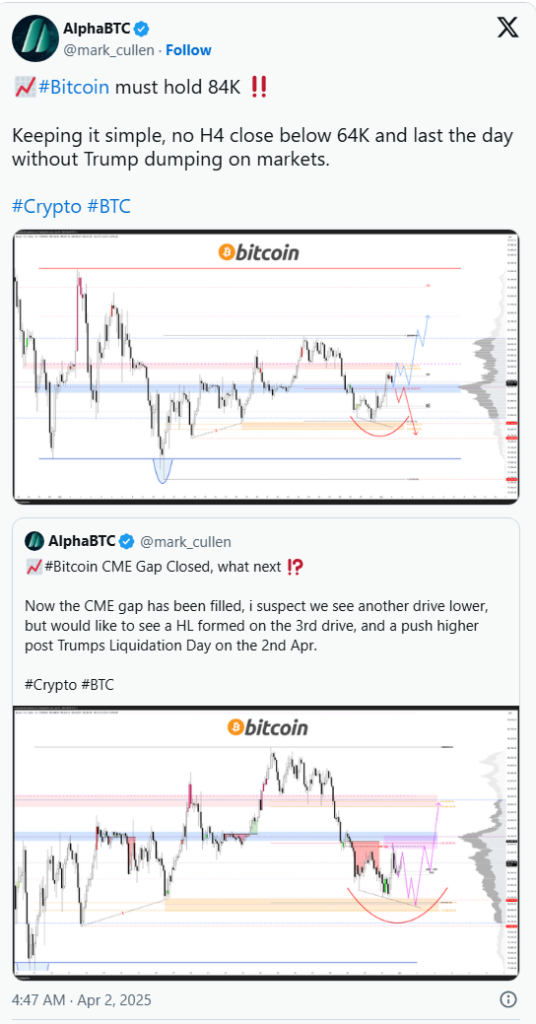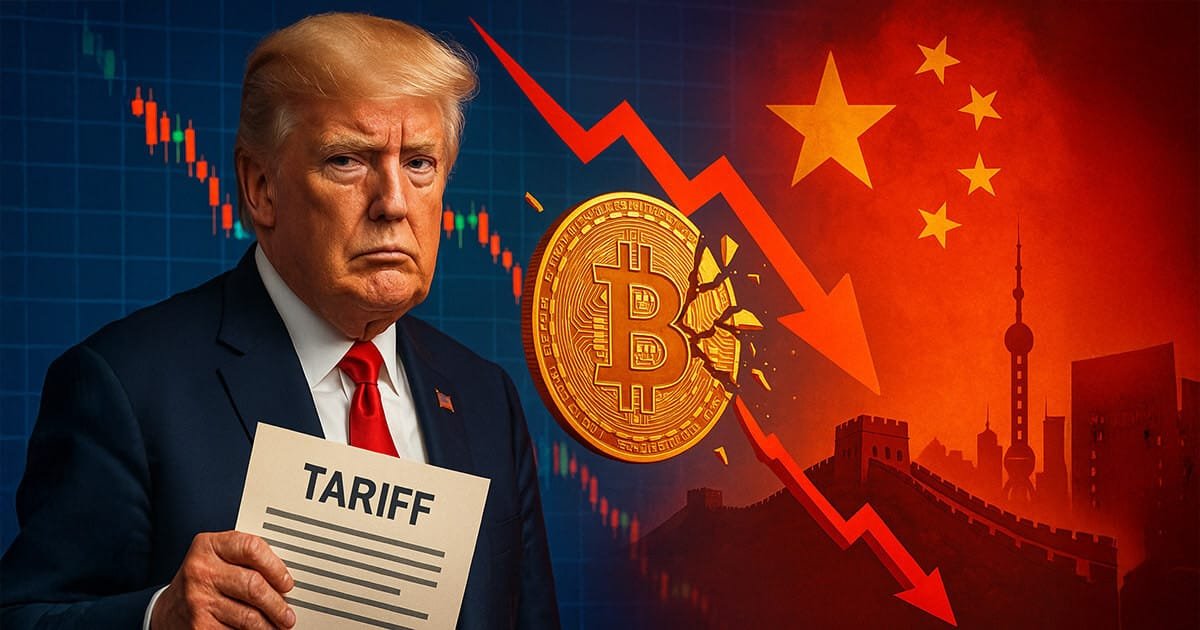Bitcoin (BTC) has rebounded 16% from its four-month low of $76,600, reaching $88,700 on March 24 before stabilizing around $85,000 as of April 2.
With recent resistance at $85,500, concerns arise over whether BTC might face another downturn in the coming days.
Could Trump’s Tariffs Pressure Bitcoin Prices?
April 2 marks the unveiling of a new wave of tariffs by U.S. President Donald Trump, dubbed “Liberation Day.” These tariffs, aimed at imports from several nations, have sparked fears of another crypto market sell-off.
Key Highlights:
- The tariff plan includes a 25% levy on auto imports, along with broad duties on products from China, Canada, and Mexico.
- While designed to reduce the U.S. trade deficit and boost domestic production, these tariffs could lead to inflation and a more cautious investment climate.
- Investors may shift away from riskier assets like Bitcoin as market sentiment turns bearish.
- A similar scenario played out in early March when Trump’s trade policies caused Bitcoin to plummet from $105,000 to $92,000 overnight.
According to QCP Capital, Trump’s latest trade measures could increase economic tensions, with impacted nations likely to retaliate.
“The U.S. appears more focused on self-interest in trade negotiations, but affected countries are unlikely to back down,” the firm stated in a Telegram update.
Additionally, officials from China, Japan, and Korea have been exploring deeper regional trade cooperation, indicating that global players are uniting rather than yielding to pressure.
“In the near term, risk assets will likely remain under stress,” QCP noted.
Inflation Risks and Market Sentiment
Trump’s trade policies are expected to contribute to short-term inflation, typically an unfavorable factor for Bitcoin and other speculative assets.
Key Considerations:
- Higher import costs drive up consumer prices, making traditional safe-haven assets like gold and U.S. Treasurys more attractive. Gold has already surged to a record $3,150 per ounce this year.
- Unlike gold, Bitcoin has yet to be universally accepted as a reliable inflation hedge.
- BTC remains closely correlated with equities, making it susceptible to broader market downturns.
- The February 2025 market drop, which saw $2 billion in liquidations following previous tariff announcements, highlights Bitcoin’s vulnerability.
- The Federal Reserve’s cautious stance on interest rate cuts could further tighten liquidity.
The Fed is unlikely to lower rates before June, with an 83.5% probability that rates will remain unchanged at the May 7 meeting, according to CME Group’s FedWatch Tool. This could dampen BTC’s momentum if key support levels fail.
Bitcoin’s Price Outlook: Volatility Ahead
Bitcoin’s price movements are often exaggerated by leveraged derivatives trading, and uncertainty surrounding the extent of Trump’s tariffs may trigger sharp price swings.
“Today marks the official announcement of Trump’s proposed global tariffs,” trader Daan Crypto Trades commented on X.
The market has been anticipating this for weeks, leading to increased uncertainty. “Depending on how severe the tariffs are and how the market reacts, we could see a major move,” he noted.
“Regardless, high volatility is almost certain today.”
On the other hand, analyst Michaël van de Poppe believes the impact of the tariffs may already be priced in, saying, “This could turn out to be a non-event, with markets returning to neutral afterward.”
Meanwhile, AlphaBTC warns that Bitcoin must hold above $84,000 to avoid a deeper decline. If this level fails, a sell-off could push BTC below $80,000, with the March 14 low of $79,900 being a critical point to watch.

For more news, find me on Twitter Giannis Andreou and subscribe to My channels Youtube and Rumble
What is your opinion on this particular topic? Leave us your comment below! We are always interested in your opinion!









